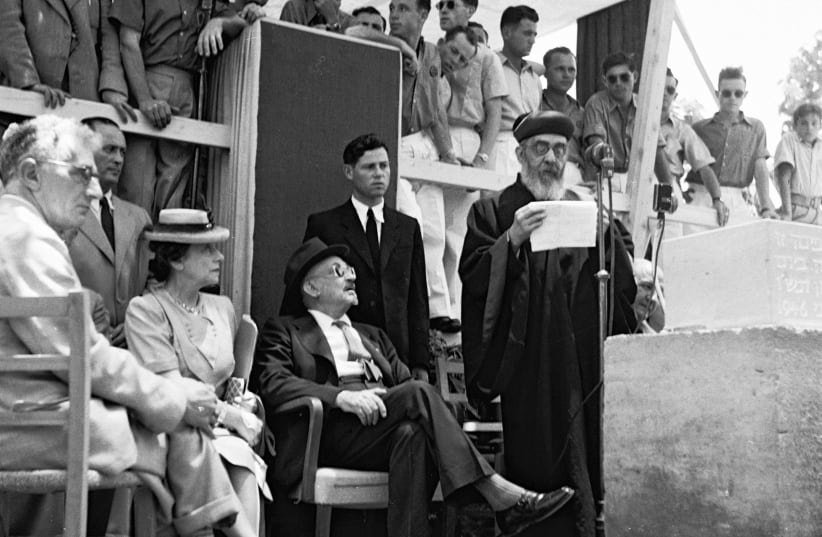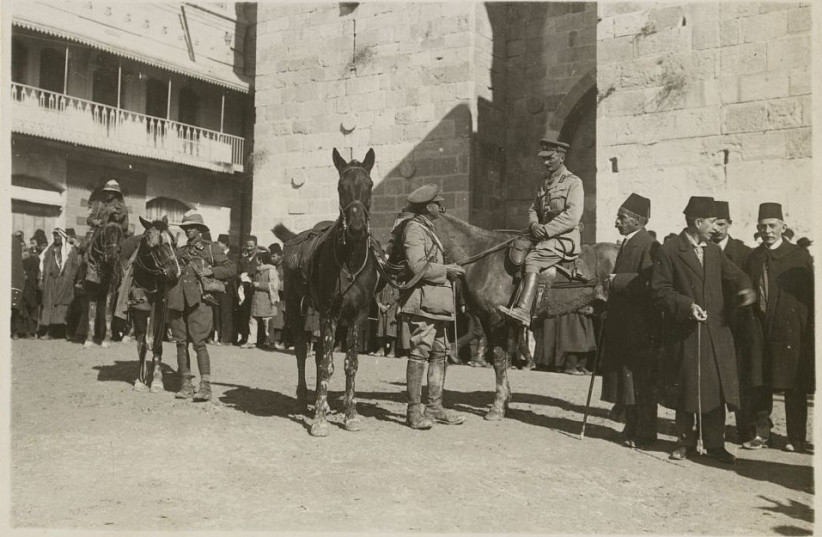As Israel celebrates Independence Day on May 14, let me tell you a story of an event 30 years prior to its establishment in 1948. The Associated Press correspondent in Palestine titled the story “Scrolls Restored to Many Synagogues” when he sent it out on the wire.
The article dealt with the “resinstatement of the Hebrew Law and Sacred Relics with interesting ceremonies” to synagogues in Tel Aviv and Jaffa. Published by a variety of newspapers in many languages, that AP story heralded the return of the Jews to their homes and religious sanctuaries after the exile forced upon them by the Turkish governor during World War I.
There was a great fear that the Turks would mutilate the sacred Torah scrolls if they captured them. There were known incidents of Turkish soldiers cutting up Torah scrolls and making backpacks out of the parchment. Thus, the exiles, forgetting about their own safety, took them from the synagogues as they left Tel Aviv and Jaffa in April 1917. The majority of the Sifrei Torah, as they are called in Hebrew, were secretly transported to Petah Tikva, where they were hidden and guarded by the community.
Returning Torah scrolls to their homes
Following General Allenby’s capture of Jerusalem, he moved north, with his army taking Tel Aviv and Jaffa in the late winter of 1917. As soon as the Jews were permitted to return to their homes, they streamed back to find out whether their residences were still intact. Some homes had been destroyed, but worst of all, the synagogues had been desecrated. With the assistance of the British occupying forces and the Jewish Legion troops, the returning exiles restored the synagogues and prepared them for the return of the Torah scrolls.
By the middle of May 1918, all was in readiness for the restoration of the “heart and soul” of the Jewish community. Since the Zionist Commission was in the country aiding the refugees and preparing for the implementation of the Balfour Declaration, its leader Chaim Weizmann was invited to be the guest of honor for the festive Torah celebration.
The day selected was May 15, and elaborate plans were made for the occasion. A triumphal arch was erected at the northern boundary of Tel Aviv, through which the procession would pass. Every house was decorated with flowers and was newly painted for the event. Bunting and banners were strung along the streets. An enormous crowd turned out, coming not only from Jaffa and Tel Aviv but also from Rishon Lezion, Petah Tikva, and Jerusalem.
This was to be a celebration for all ages. Hence the young men and women of the Maccabi Athletic Association, dressed in white with blue sashes and ties, acted as the ushers, keeping the crowd in control and ensuring that the pathway would be kept clear for the procession.
The formal procession from Petah Tikva with the Torah scrolls was an international one in character. It was led by the Australian military band, whose members stood out in their white uniforms. Officers of the various units of the British Occupation forces were assembled near the Triumphal Arch, along with the military government, Dr. Weizmann, and the members of the Zionist Commission.
The featured speaker at the ceremony was the Haham Bashi (chief rabbi) of Jaffa-Tel Aviv, Rav Ben-Zion Uziel, who later became Israel’s Sephardi chief rabbi. He had been the chief rabbi since 1911 and had been a tower of strength during the period of the exile. When the procession reached the arch, Rabbi Uziel ascended the dais erected for the ceremony and delivered an eloquent Hebrew address.
In his speech, he recounted the hardships of the evacuation, the hunger, and the terrible tribulations the Jews of the Yishuv had experienced. In the spirit of appreciation, he thanked the British authorities and asked for blessings for the king and the British forces. He then stretched forth his hand in friendship to all the inhabitants of the country, emphasizing that the Jews desired to regenerate Palestine not only for their own benefit but also for all the country’s people. He urged the Arabs to join hands with the Jewish people in building the country anew. In closing, he asserted that the reestablishment of the Jewish people in their ancient homeland in Eretz Yisrael would be for the good of all humanity.
When the rabbi completed his address, he and Weizmann each took a Torah in hand to lead the procession through the arch. As they stood waiting for the shofar to be sounded, a photograph was snapped, which is now in the Central Zionist Archives, capturing the joy of their return to Zion. Interestingly enough, it was to be on that same date – May 15 – in 1948 that Israel became a state.■

